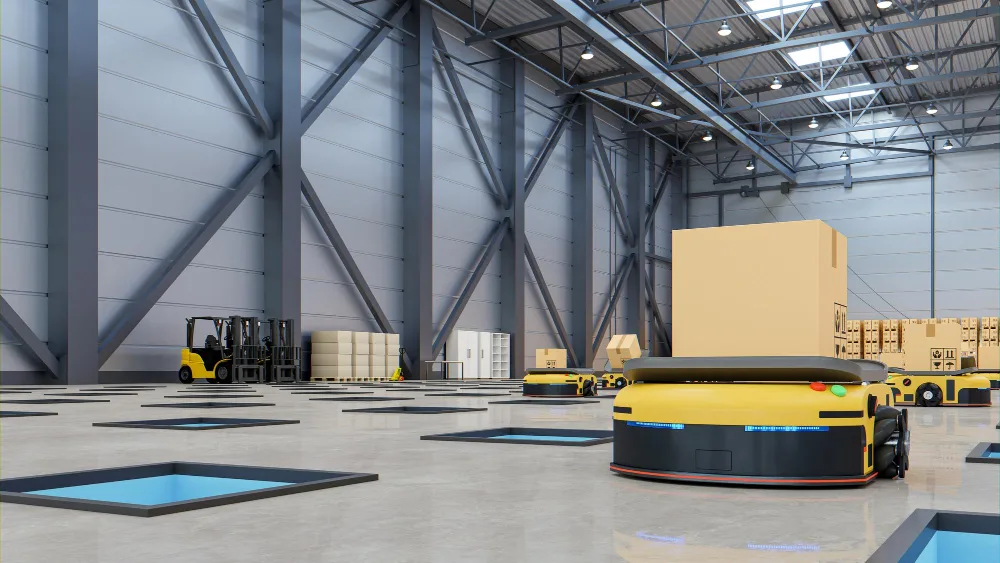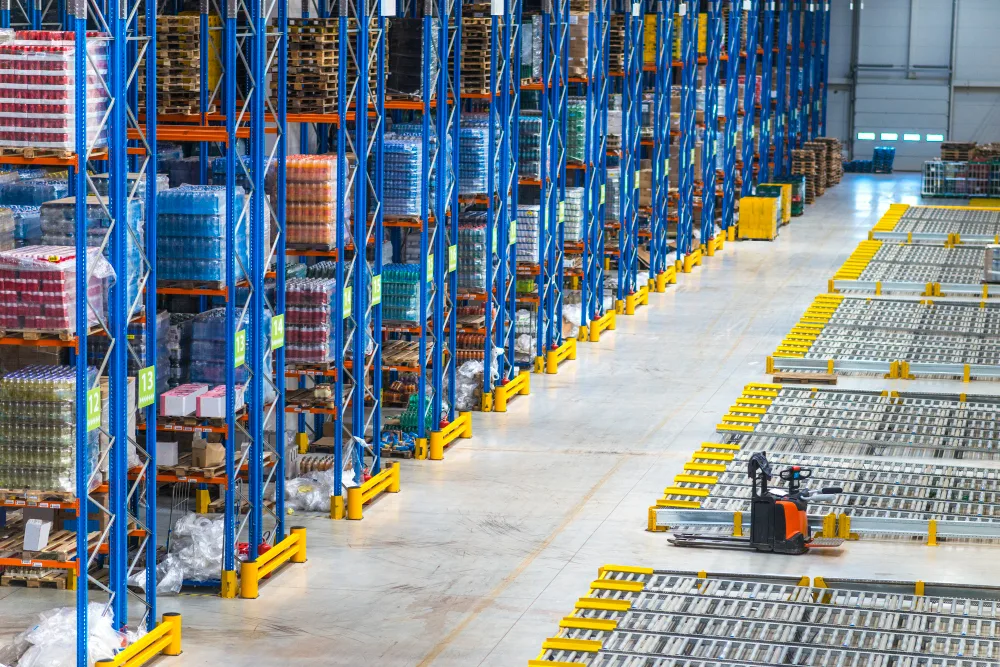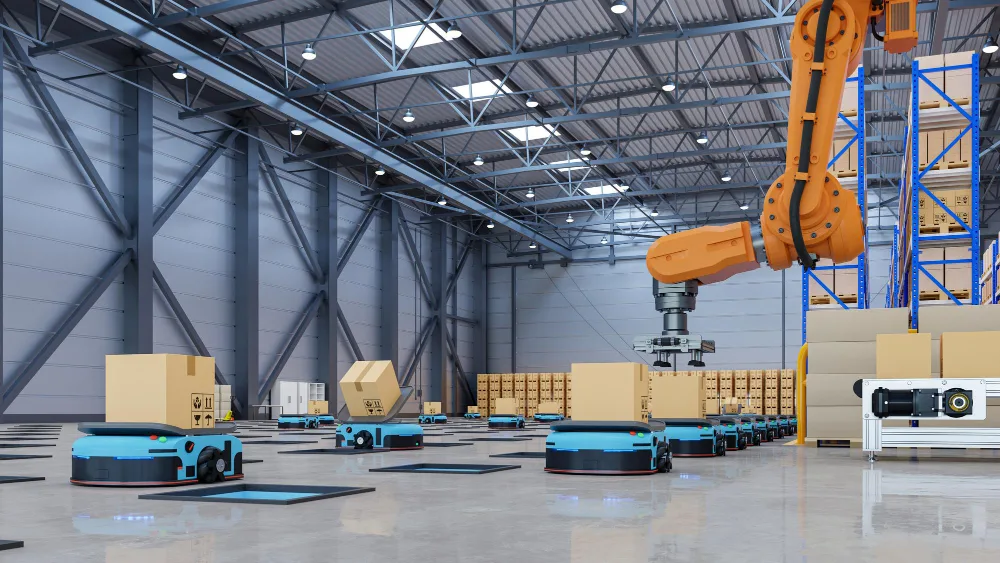

Senior Editor, Industrial Marketing Solution Expert
The landscape of warehouse storage is undergoing a dramatic transformation as businesses grapple with increasing consumer demands, e-commerce growth, and the need for operational efficiency. Modern warehouse storage solutions are no longer just about maximizing space – they’re about creating intelligent, automated systems that can adapt to changing needs while maintaining precision and speed. This comprehensive exploration delves into the cutting-edge technologies that are reshaping how we think about warehouse storing and the innovative approaches that are setting new standards for the industry.
Traditional warehouse storage methods relied heavily on manual processes, static shelving systems, and human-operated equipment. However, the modern warehouse storage environment demands solutions that can handle exponentially higher volumes while maintaining accuracy and reducing operational costs. The shift from conventional storage to intelligent, automated systems represents one of the most significant transformations in logistics history.
Today’s warehouse storage facilities are becoming increasingly sophisticated, incorporating advanced robotics, artificial intelligence, and data-driven decision-making processes. These technologies work in harmony to create storage environments that are not only more efficient but also more responsive to real-time demands and market fluctuations.
The integration of innovative technologies has fundamentally changed how warehouse storing operations function. Instead of relying on predetermined storage locations and manual retrieval processes, modern systems can dynamically optimize storage locations based on factors such as product velocity, seasonal demand patterns, and order frequency. This intelligent approach to warehouse storage maximizes both space utilization and operational efficiency.
Automated Storage and Retrieval Systems (AS/RS) represent the pinnacle of warehouse storage innovation. These sophisticated systems utilize intelligent robots that navigate across aluminum grids, storing and retrieving items from densely packed storage areas. The modular design of these systems enables unprecedented scalability, making them suitable for warehouses of all sizes, from compact micro-fulfillment centers to large-scale distribution hubs.
The cube-based approach to warehouse storing eliminates the need for traditional aisles, maximizing vertical space utilization and delivering unmatched storage density. This innovative design can double or even quadruple storage capacity compared to conventional warehousing methods, significantly reducing the need for costly expansions or new construction projects.
Modern AS/RS solutions excel at maximizing vertical space, a crucial factor in optimizing warehouse storage. By utilizing the full height of warehouse facilities and eliminating wasted aisle space, these systems create incredibly dense storage environments. The intelligent robots can access storage locations at any height with equal efficiency, making every cubic foot of warehouse space productive.
The modular nature of these systems enables seamless integration with other warehouse automation technologies, resulting in comprehensive storage solutions that can adapt to evolving business needs. This flexibility is particularly valuable in today’s dynamic market environment, where businesses must be able to scale their operations quickly and efficiently.
The effectiveness of automated storage systems is greatly enhanced when integrated with sophisticated warehouse management systems (WMS). These software platforms provide real-time visibility into inventory levels, optimize storage locations based on product characteristics and demand patterns, and coordinate the movement of goods throughout the facility.
The integration of AS/RS with WMS creates a synergistic relationship where hardware and software work together to optimize warehouse storing operations. The system can automatically determine the most efficient storage locations for incoming inventory, predict when items will be needed for outbound orders, and optimize the sequence of storage and retrieval operations to maximize throughput.
Autonomous Mobile Robots (AMRs) are transforming warehouse storage operations by providing flexible, intelligent solutions for moving goods throughout facilities. Unlike traditional automated guided vehicles that follow predetermined paths, AMRs utilize advanced navigation technologies, including simultaneous localization and mapping, LiDAR sensors, and sophisticated cameras, to adapt to real-time environmental conditions.
The global market for AMRs is experiencing explosive growth, with compound annual growth rates exceeding 22% as businesses recognize their potential to revolutionize warehouse storing operations. These robots can navigate complex warehouse environments, avoid obstacles, and collaborate with human workers to optimize storage and retrieval processes.
AMRs offer significant advantages in warehouse storage applications, including enhanced order accuracy, improved safety, and the ability to collect valuable performance data during operation. Their flexibility allows them to be reprogrammed to meet evolving warehouse needs, supporting scalability and growth while maintaining operational efficiency.
Automated Guided Vehicles (AGVs) continue to play a crucial role in warehouse storage operations, particularly in applications that require the consistent and reliable movement of materials along predetermined routes. Modern AGVs, including automated forklifts, can transport pallets, materials, and goods without human intervention, operating around the clock to maximize productivity.
The integration of AGVs into warehouse storing systems reduces manual labor requirements while improving safety and operational consistency. These vehicles can be programmed to handle specific types of loads and navigate complex warehouse layouts with precision, making them ideal for high-volume storage and retrieval operations.
Advanced AGV systems can communicate with warehouse management systems to receive real-time instructions, optimize routing, and coordinate with other automated equipment. This level of integration ensures that AGVs work seamlessly within the broader warehouse storage ecosystem, contributing to overall operational efficiency.
Robotic piece-picking arms represent a significant advancement in warehouse storage technology, offering unprecedented precision and efficiency in order fulfillment processes. These intelligent systems utilize machine learning algorithms and advanced vision systems to accurately pick and place a wide range of products with remarkable precision and dexterity.
The integration of robotic picking arms with automated storage systems creates a comprehensive solution that streamlines the entire order fulfillment cycle. These robots continuously learn and refine their capabilities through machine learning, adapting to changing product mixes and order patterns while maintaining high levels of accuracy.
By automating traditionally labor-intensive picking tasks, robotic systems enable businesses to reallocate human resources to more value-added activities while improving overall warehouse storage efficiency. The combination of speed, accuracy, and consistency makes robotic picking an essential component of modern warehouse operations.
Artificial Intelligence and Machine Learning are revolutionizing warehouse storage by enabling predictive analytics that optimize inventory management and storage decisions. These technologies analyze vast amounts of data to identify patterns, predict demand fluctuations, and maximize storage locations based on historical performance and future projections.
AI-powered systems can automatically adjust storage strategies based on seasonal trends, product lifecycle stages, and market conditions, thereby enabling more efficient inventory management. This intelligent approach to warehouse storing ensures that fast-moving items are positioned for quick access while slower-moving inventory is stored in less accessible but more cost-effective locations.
The predictive capabilities of AI systems extend beyond simple demand forecasting to include maintenance scheduling, equipment optimization, and resource allocation. By anticipating future needs and potential issues, these systems help warehouse operators maintain optimal performance while minimizing operational disruptions.
Machine learning algorithms continuously analyze warehouse storage operations to identify opportunities for optimization and implement improvements automatically. These systems can adjust storage strategies in real time based on current conditions, order patterns, and operational constraints.
The ability to make real-time decisions based on comprehensive data analysis enables warehouse storage systems to respond quickly to changing conditions. Whether dealing with unexpected demand spikes, equipment failures, or supply chain disruptions, AI-powered systems can adapt storage strategies to maintain operational efficiency.
This dynamic approach to warehouse storage represents a fundamental shift from static storage strategies to intelligent, adaptive systems that continuously optimize performance. The result is improved efficiency, reduced costs, and enhanced customer satisfaction through faster, more accurate order fulfillment.
The Internet of Things (IoT) plays a crucial role in modern warehouse storage by providing comprehensive monitoring and data collection capabilities. IoT sensors throughout the warehouse continuously monitor environmental conditions, equipment performance, and inventory levels, providing the data foundation for AI-driven optimization.
This comprehensive monitoring enables predictive maintenance strategies that prevent equipment failures before they occur, reducing downtime and maintaining consistent warehouse storing operations. Environmental monitoring ensures that products are stored under optimal conditions, which is particularly important for temperature-sensitive or perishable goods.
The integration of IoT with AI creates a feedback loop where sensor data informs machine learning algorithms, which in turn optimize storage strategies and operational parameters. This continuous improvement cycle ensures that warehouse storage systems become more efficient over time.

Modern Warehouse Management Systems (WMS) serve as the central nervous system for warehouse storage operations, coordinating all aspects of inventory management, order processing, and resource allocation. These sophisticated software platforms leverage real-time data to optimize warehouse storing processes and ensure maximum efficiency.
Contemporary WMS solutions integrate with automated storage systems, robotics, and other warehouse technologies to create seamless, coordinated operations. The system can track inventory locations in real time, optimize storage assignments based on product characteristics and demand patterns, and coordinate the movement of goods throughout the facility.
The data-driven approach enabled by modern WMS platforms provides unprecedented visibility into warehouse operations. Managers can monitor key performance indicators in real time, identify bottlenecks and inefficiencies, and make data-informed decisions to optimize warehouse storage performance.
The integration of WMS with automated storage and retrieval systems creates a powerful combination that maximizes the benefits of both technologies. The software system can automatically direct robots to optimal storage locations, coordinate multiple automated systems to work together efficiently and optimize the sequence of operations to maximize throughput.
This integration extends beyond simple coordination to include advanced optimization algorithms that consider multiple factors when making storage and retrieval decisions. The system can balance factors such as storage density, access frequency, product compatibility, and operational constraints to determine the most efficient warehouse storing strategies.
The seamless integration of software and hardware systems creates warehouse storage environments that operate with minimal human intervention while maintaining high levels of accuracy and efficiency. This automation reduces labor costs, minimizes errors, and enables 24/7 operations that maximize facility utilization.
Advanced WMS platforms provide real-time visibility into inventory levels, locations, and movements throughout the warehouse. This comprehensive tracking capability is essential for maintaining accurate inventory records and ensuring that products can be located quickly when needed for order fulfillment.
Real-time tracking extends beyond simple location monitoring to include detailed information about product characteristics, storage requirements, and handling instructions. This comprehensive data enables the system to make intelligent decisions about warehouse storing strategies and ensure that products are handled appropriately throughout their time in the facility.
The ability to track inventory in real time also enables advanced analytics and reporting capabilities that provide insights into warehouse performance, inventory turnover, and operational efficiency. These insights enable warehouse managers to identify opportunities for improvement and refine their storage strategies over time.
Sustainability has become a critical consideration in warehouse storage design, with businesses increasingly focusing on energy-efficient technologies and environmentally responsible practices. Modern storage systems are designed to minimize energy consumption while maximizing operational efficiency, creating warehouse storing solutions that are both economically and environmentally sustainable.
LED lighting systems with intelligent controls can significantly reduce energy consumption while providing optimal visibility for warehouse operations. These systems can automatically adjust lighting levels based on activity patterns and natural light availability, ensuring that energy is used efficiently throughout the facility.
Automated systems contribute to sustainability by optimizing warehouse storing operations to minimize energy consumption. By reducing the need for manual material handling equipment and optimizing storage density, these systems can significantly reduce the overall energy footprint of warehouse operations.
Sustainable warehouse storage practices focus on minimizing waste and optimizing resource utilization throughout the facility. This includes strategies for reducing packaging waste, optimizing space utilization, and implementing recycling programs for materials used in warehouse operations.
Advanced storage systems contribute to waste reduction by maximizing storage density and minimizing the need for additional warehouse space. By utilizing vertical space more effectively and eliminating wasted aisle space, these systems reduce the overall environmental footprint of warehouse operations.
The optimization of warehouse storing processes also contributes to sustainability by reducing the time and energy required for storage and retrieval operations. More efficient processes result in lower energy consumption, reduced wear on equipment, and a lower overall environmental impact.
Modern warehouse storage facilities are increasingly incorporating green building technologies and sustainable design principles. This includes features such as solar panels, rainwater harvesting systems, and energy-efficient building materials that reduce the environmental impact of warehouse operations.
The integration of sustainable technologies with advanced storage systems creates warehouse storage environments that are both highly efficient and environmentally responsible. These facilities demonstrate that operational efficiency and environmental sustainability can be achieved simultaneously.
Green building certifications and sustainability standards are becoming increasingly important for warehouse operators as customers and stakeholders place greater emphasis on environmental responsibility. Sustainable warehouse storage solutions enable businesses to meet these expectations while reducing operational costs and enhancing their competitive position.

Warehouse drones are emerging as a revolutionary technology for inventory management and warehouse storing operations. These aerial vehicles can navigate warehouse aisles, scan barcodes, and provide real-time inventory data without manual intervention, offering significant advantages in large or high-density storage facilities.
Drones equipped with advanced cameras and sensors can perform inventory audits much faster and more accurately than traditional manual methods. They can access high storage locations that are difficult or dangerous for human workers to reach, providing comprehensive inventory visibility throughout the facility.
The integration of drone technology with warehouse management systems creates powerful capabilities for real-time inventory tracking and management. Drones can be programmed to perform regular inventory checks, identify discrepancies, and provide immediate updates to the WMS, ensuring that inventory records remain accurate and up-to-date.
Wearable technologies are transforming how warehouse workers interact with storage systems and perform their daily tasks. Smart glasses with augmented reality capabilities enable workers to access essential information without relying on physical paperwork or handheld devices, thereby improving efficiency and accuracy in warehouse storage operations.
Smart gloves with sensor technology can recognize hand gestures and provide automatic alerts and task instructions, enabling hands-free control over warehouse systems. These technologies reduce the time required to complete tasks while improving accuracy and worker safety.
Health monitoring sensors integrated into wearable devices can track worker vital signs and ergonomic factors, helping to prevent fatigue and reduce injury risk. This focus on worker health and safety is particularly important in warehouse storing environments where physical demands can be significant.
Voice picking and tasking systems are becoming increasingly sophisticated, offering hands-free methods for warehouse storing operations that enhance safety and operational efficiency. These systems utilize voice commands to guide workers through picking and storage tasks, thereby reducing the need for handheld devices and enhancing productivity.
The integration of voice technology with warehouse management systems enables real-time communication between workers and the central control system, facilitating seamless operations. Workers can receive instructions, confirm task completion, and report issues using voice commands, streamlining communication and reducing the time required for administrative tasks.
Advanced voice systems can adapt to individual worker preferences and speech patterns, improving accuracy and reducing training time. This personalization makes the technology more effective and user-friendly, encouraging adoption and maximizing the benefits of hands-free operations.
Implementing advanced warehouse storage technologies requires careful planning and a phased approach that minimizes disruption to ongoing operations. Businesses should begin by assessing their current storage systems and identifying areas where technology can provide the greatest benefits.
The initial phase of implementation often focuses on foundational technologies such as warehouse management systems and basic automation. These systems provide the data infrastructure and operational framework necessary to support more advanced technologies in subsequent phases.
As businesses gain experience with basic automation, they can gradually introduce more sophisticated technologies such as robotics, AI-powered optimization, and advanced storage systems. This phased approach allows organizations to build expertise and confidence while minimizing risk and operational disruption.
Successful implementation of modern warehouse storage technologies requires careful integration with existing systems and processes. This includes ensuring compatibility between new technologies and legacy systems, training staff on new procedures, and maintaining operational continuity during the transition period.
The integration process should include comprehensive testing and validation to ensure that new systems work effectively with existing warehouse storing processes. This testing phase is critical for identifying potential issues and making necessary adjustments before full implementation.
Change management is a crucial aspect of technology integration, as workers must adapt to new systems and processes. Comprehensive training programs and ongoing support help ensure that staff can effectively utilize new technologies and contribute to the success of the implementation.
The success of warehouse storage technology implementations should be measured using comprehensive metrics that capture both operational improvements and financial benefits. Key performance indicators include storage density improvements, order accuracy rates, labor cost reductions, and customer satisfaction scores.
Return on investment calculations should consider both direct cost savings and indirect benefits such as improved customer satisfaction, reduced error rates, and enhanced operational flexibility. These comprehensive assessments help justify technology investments and guide future improvement initiatives.
Regular performance reviews and optimization efforts ensure that warehouse storing systems continue to deliver maximum value over time. This ongoing attention to performance helps businesses realize the full potential of their technology investments and maintain competitive advantages in the marketplace.

The future of warehouse storage is being shaped by rapid technological advancement and evolving market demands. As e-commerce continues to grow and customer expectations for fast and accurate delivery increase, warehouse storage systems must become even more sophisticated and responsive.
Emerging technologies such as artificial intelligence, machine learning, and advanced robotics will continue to transform warehouse operations, creating storage environments that are increasingly autonomous and intelligent. These systems will be able to adapt to changing conditions automatically, optimize performance continuously, and provide unprecedented levels of efficiency and accuracy.
The integration of sustainable practices with advanced technology will become increasingly important as businesses seek to balance operational efficiency with environmental responsibility. Future warehouse storage solutions will need to demonstrate both economic and environmental benefits to meet the expectations of customers and stakeholders.
As these technologies mature and become more accessible, businesses of all sizes will have opportunities to implement advanced warehouse storing solutions. The democratization of these technologies will level the playing field, enabling smaller businesses to compete effectively with larger organizations.
The transformation of warehouse storage represents one of the most significant developments in modern logistics, with implications that extend far beyond individual facilities to encompass entire supply chains and economic systems. As these technologies continue to evolve and mature, they will play an increasingly important role in shaping the future of commerce and logistics.
Modern warehouse storage is no longer just about maximizing space utilization – it’s about creating intelligent, adaptive systems that can respond to changing market conditions while maintaining the highest levels of efficiency and accuracy. The businesses that adopt and implement these technologies effectively will be best positioned to succeed in tomorrow’s competitive landscape.